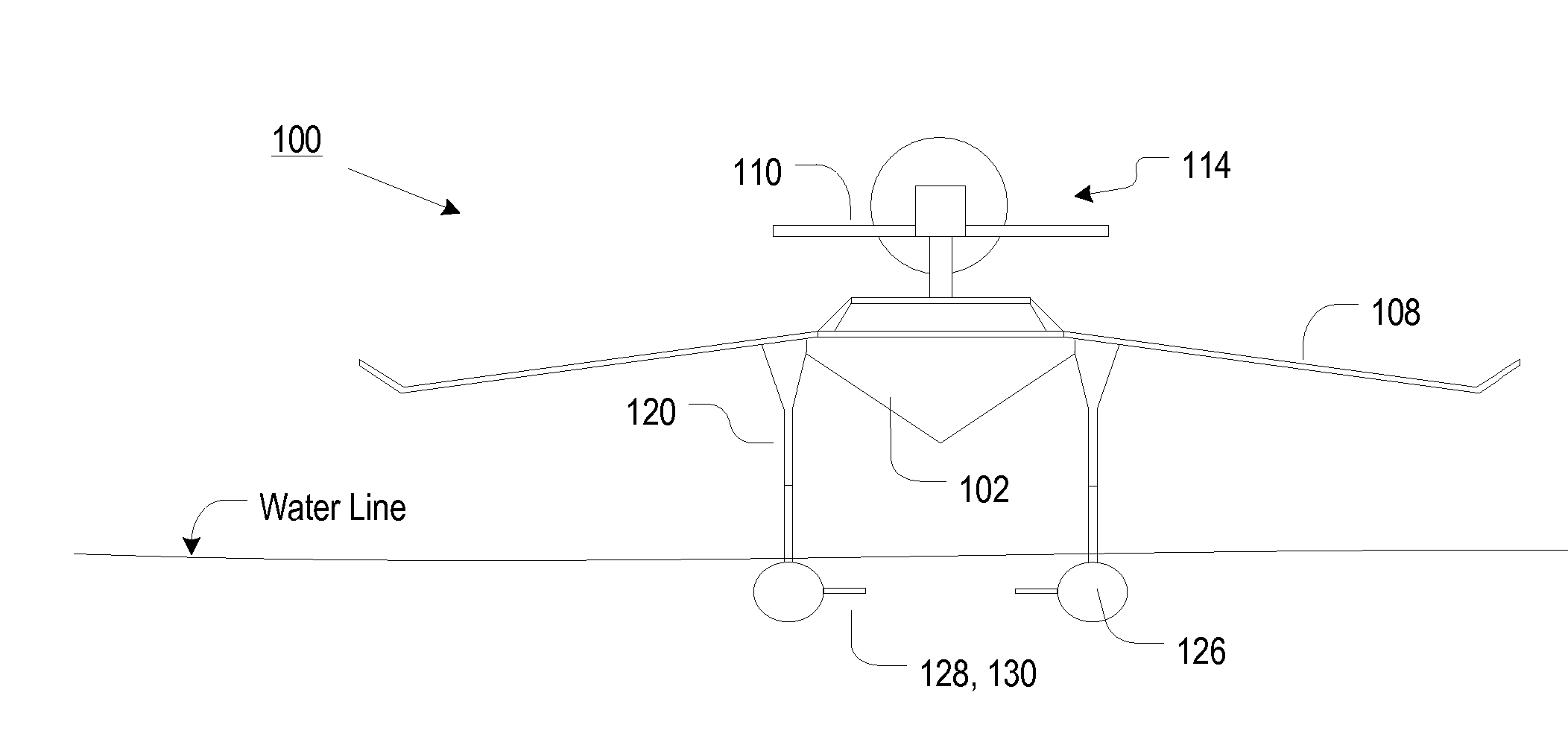Stable, high-speed marine vessel
a high-speed, marine technology, applied in special-purpose vessels, vessel construction, transportation and packaging, etc., can solve the problems of static-lift craft developing a substantial amount of dynamic drag, static-lift craft becoming relatively inefficient, and type of craft not being able to operate, so as to achieve a greater amount of speed and a higher level of stability
- Summary
- Abstract
- Description
- Claims
- Application Information
AI Technical Summary
Benefits of technology
Problems solved by technology
Method used
Image
Examples
Embodiment Construction
[0023]FIG. 1 depicts a front view and FIG. 2 depicts a side view of marine vessel 100 in accordance with the illustrative embodiment of the present invention. Referring now to both Figures, vessel 100 includes upper hull 102, wings 108, struts 120, and lower hulls 126, interrelated as shown.
[0024] Upper hull 102 includes cockpit or pilot house 204 and deck 206. In some embodiments, deck 206 is enclosed (not depicted) to provide a protected storage area. Upper hull 102 is advantageously configured with stealth surfaces (e.g., angled surfaces, etc.) and materials to reduce its signatures (e.g., radar, infrared, etc.).
[0025] Wings 108 are disposed amidship; they depend from upper hull 102. As described in further detail later in this specification, wings provide lift (i.e., dynamic lift), when vessel is underway at sufficient speed. In the illustrative embodiment, the wings are not designed for flight; they simply supplement the lift (i.e., buoyancy) provided by lower hulls 106.
[002...
PUM
 Login to View More
Login to View More Abstract
Description
Claims
Application Information
 Login to View More
Login to View More - R&D
- Intellectual Property
- Life Sciences
- Materials
- Tech Scout
- Unparalleled Data Quality
- Higher Quality Content
- 60% Fewer Hallucinations
Browse by: Latest US Patents, China's latest patents, Technical Efficacy Thesaurus, Application Domain, Technology Topic, Popular Technical Reports.
© 2025 PatSnap. All rights reserved.Legal|Privacy policy|Modern Slavery Act Transparency Statement|Sitemap|About US| Contact US: help@patsnap.com


